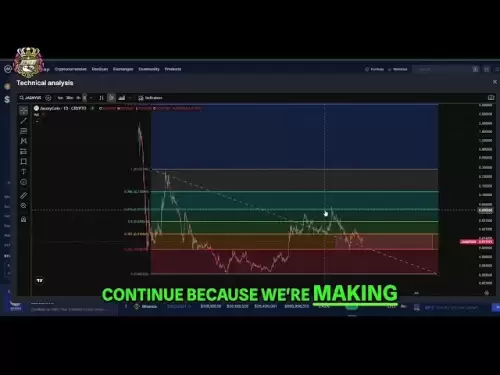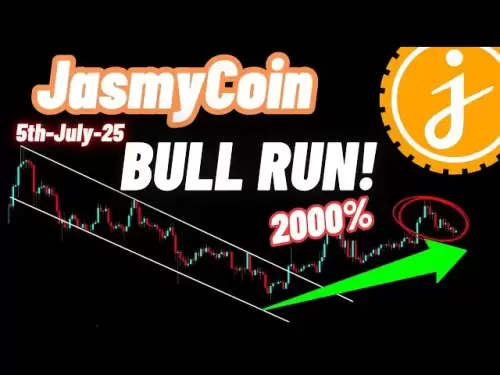-
 Bitcoin
Bitcoin $108,250.0992
0.11% -
 Ethereum
Ethereum $2,515.9404
0.03% -
 Tether USDt
Tether USDt $1.0003
0.00% -
 XRP
XRP $2.2166
-0.19% -
 BNB
BNB $656.5904
0.29% -
 Solana
Solana $147.4122
-0.58% -
 USDC
USDC $1.0000
-0.01% -
 TRON
TRON $0.2830
0.06% -
 Dogecoin
Dogecoin $0.1641
0.27% -
 Cardano
Cardano $0.5739
-0.19% -
 Hyperliquid
Hyperliquid $39.1463
-0.11% -
 Sui
Sui $2.8882
-0.02% -
 Bitcoin Cash
Bitcoin Cash $487.6428
0.31% -
 Chainlink
Chainlink $13.2097
0.07% -
 UNUS SED LEO
UNUS SED LEO $9.0308
0.10% -
 Avalanche
Avalanche $17.8608
0.13% -
 Stellar
Stellar $0.2379
-0.06% -
 Toncoin
Toncoin $2.7400
-0.39% -
 Shiba Inu
Shiba Inu $0.0...01144
-0.36% -
 Litecoin
Litecoin $87.5467
0.66% -
 Hedera
Hedera $0.1538
0.22% -
 Monero
Monero $315.5479
0.36% -
 Dai
Dai $1.0000
0.00% -
 Polkadot
Polkadot $3.3523
-0.71% -
 Ethena USDe
Ethena USDe $1.0003
0.01% -
 Bitget Token
Bitget Token $4.3960
-1.03% -
 Uniswap
Uniswap $7.2663
4.19% -
 Aave
Aave $272.8619
2.04% -
 Pepe
Pepe $0.0...09676
-0.18% -
 Pi
Pi $0.4586
-2.87%
Does Gate.io support fiat currency trading? How to buy and sell with a bank card
Gate.io supports limited fiat trading with USD, EUR, GBP, CAD, and AUD, and allows buying/selling crypto with bank cards, with fees of 3-5% for buying and 1-3% for selling.
Apr 29, 2025 at 05:50 pm

Gate.io is one of the leading cryptocurrency exchanges that primarily focuses on trading digital assets. However, many users are curious about whether it supports fiat currency trading and how to buy and sell cryptocurrencies using a bank card. In this article, we will explore these topics in detail.
Does Gate.io Support Fiat Currency Trading?
Gate.io does support fiat currency trading to some extent, but the options are limited compared to other major exchanges. The platform allows users to deposit and withdraw certain fiat currencies, but the availability of these services can vary depending on the user's location.
Gate.io currently supports the following fiat currencies for trading:
- USD (United States Dollar)
- EUR (Euro)
- GBP (British Pound)
- CAD (Canadian Dollar)
- AUD (Australian Dollar)
It's important to note that not all these currencies are available for all users. The availability of fiat trading pairs can depend on the regulatory environment in the user's country. For example, users in the United States may have more options compared to users in other regions.
How to Buy Cryptocurrencies with a Bank Card on Gate.io
Buying cryptocurrencies with a bank card on Gate.io is a straightforward process. Here's a detailed guide on how to do it:
- Log into your Gate.io account. If you don't have an account, you'll need to sign up and complete the necessary verification steps.
- Navigate to the "Buy Crypto" section. This can usually be found in the top navigation menu.
- Select "Bank Card" as your payment method. You will be prompted to enter the amount of cryptocurrency you want to buy.
- Choose the cryptocurrency you want to purchase. Gate.io supports a wide range of cryptocurrencies, so make sure to select the one you're interested in.
- Enter your card details. You'll need to provide your bank card information, including the card number, expiration date, and CVV code.
- Verify the transaction. You may need to complete a verification process, such as entering a code sent to your phone or email.
- Confirm the purchase. Once all details are entered and verified, you can confirm the transaction. The cryptocurrency will be credited to your Gate.io wallet shortly after the payment is processed.
How to Sell Cryptocurrencies and Withdraw to a Bank Card on Gate.io
Selling cryptocurrencies and withdrawing the proceeds to a bank card on Gate.io is also a relatively simple process. Here's how to do it:
- Log into your Gate.io account.
- Navigate to the "Sell Crypto" section. This can usually be found in the top navigation menu.
- Select "Bank Card" as your withdrawal method. You will be prompted to enter the amount of cryptocurrency you want to sell.
- Choose the cryptocurrency you want to sell. Make sure to select the cryptocurrency you have in your Gate.io wallet.
- Enter your bank card details. You'll need to provide your bank card information, including the card number, expiration date, and CVV code.
- Verify the transaction. You may need to complete a verification process, such as entering a code sent to your phone or email.
- Confirm the sale. Once all details are entered and verified, you can confirm the transaction. The proceeds will be sent to your bank card shortly after the sale is processed.
Fees and Limits for Fiat Transactions on Gate.io
When using fiat currencies on Gate.io, it's important to be aware of the fees and limits associated with these transactions.
Fees for buying cryptocurrencies with a bank card:
- The fee for buying cryptocurrencies with a bank card can vary, but it typically ranges from 3% to 5% of the transaction amount. This fee covers the processing costs and any potential currency conversion fees.
Fees for selling cryptocurrencies and withdrawing to a bank card:
- The fee for selling cryptocurrencies and withdrawing to a bank card can also vary, but it typically ranges from 1% to 3% of the transaction amount. This fee covers the processing costs and any potential currency conversion fees.
Limits for fiat transactions:
- The limits for fiat transactions on Gate.io can vary depending on the user's verification level and the specific fiat currency being used. Typically, new users may have lower limits, while verified users can enjoy higher limits. It's important to check the specific limits applicable to your account before conducting any transactions.
Security Measures for Fiat Transactions on Gate.io
Gate.io takes several security measures to ensure the safety of fiat transactions on its platform.
Some of the key security measures include:
- Two-Factor Authentication (2FA): Gate.io encourages users to enable 2FA to add an extra layer of security to their accounts. This helps prevent unauthorized access and protects against potential hacks.
- SSL Encryption: All transactions on Gate.io are protected by SSL encryption, which ensures that your data and financial information are transmitted securely.
- Cold Storage: Gate.io stores the majority of user funds in cold storage, which is offline and less vulnerable to hacking attempts.
- Regular Security Audits: Gate.io conducts regular security audits to identify and address any potential vulnerabilities in its system.
User Experience and Customer Support for Fiat Transactions
Gate.io aims to provide a user-friendly experience for its users, including those engaging in fiat transactions.
Key aspects of the user experience include:
- Intuitive Interface: The platform's interface is designed to be easy to navigate, making it simple for users to buy and sell cryptocurrencies with fiat currencies.
- Customer Support: Gate.io offers customer support through various channels, including email and live chat. Users can reach out for assistance with any issues related to fiat transactions.
Frequently Asked Questions:
Q1: Can I use a credit card to buy cryptocurrencies on Gate.io?
A1: Yes, you can use a credit card to buy cryptocurrencies on Gate.io. The process is similar to using a bank card, and you'll need to enter your credit card details during the transaction.
Q2: Are there any countries where Gate.io does not support fiat currency trading?
A2: Yes, Gate.io's fiat currency trading services may not be available in certain countries due to regulatory restrictions. It's important to check the platform's availability in your country before attempting to use these services.
Q3: How long does it take for the funds to be credited to my bank card after selling cryptocurrencies on Gate.io?
A3: The time it takes for funds to be credited to your bank card after selling cryptocurrencies on Gate.io can vary. Typically, it can take anywhere from 1 to 5 business days, depending on your bank and the processing times involved.
Q4: Can I withdraw fiat currencies directly to my bank account instead of a bank card?
A4: Yes, Gate.io also supports direct withdrawals to bank accounts for certain fiat currencies. The process is similar to withdrawing to a bank card, but you'll need to provide your bank account details instead.
Disclaimer:info@kdj.com
The information provided is not trading advice. kdj.com does not assume any responsibility for any investments made based on the information provided in this article. Cryptocurrencies are highly volatile and it is highly recommended that you invest with caution after thorough research!
If you believe that the content used on this website infringes your copyright, please contact us immediately (info@kdj.com) and we will delete it promptly.
- Ruvi AI: The Avalanche of Returns Crashing into the Crypto Scene
- 2025-07-06 08:30:13
- XRP's Wild Ride: Is a Parabolic Bull Run on the Horizon?
- 2025-07-06 08:30:13
- Bitcoin, Suspicion, and Billions: Decoding the Crypto Whale Moves
- 2025-07-06 08:50:13
- Bitcoin's Price Discovery Quest: Rally Structure Under the Microscope
- 2025-07-06 08:50:13
- Chainlink's Bullish Blueprint: Price Prediction and the Harmonic Pattern
- 2025-07-06 06:30:12
- Ruvi AI: The Audited Token Promising ROI That'll Make Your Head Spin
- 2025-07-06 06:30:12
Related knowledge
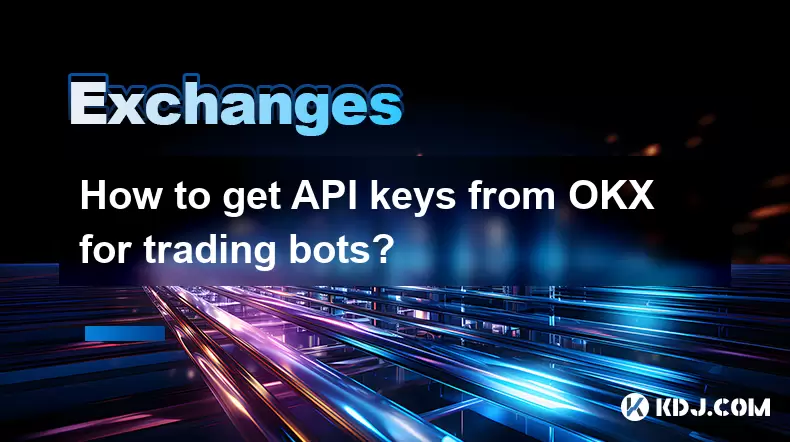
How to get API keys from OKX for trading bots?
Jul 03,2025 at 07:07am
Understanding API Keys on OKXTo interact with the OKX exchange programmatically, especially for building or running trading bots, you need to obtain an API key. An API (Application Programming Interface) key acts as a secure token that allows your bot to communicate with the exchange's servers. On OKX, these keys come with customizable permissions such ...
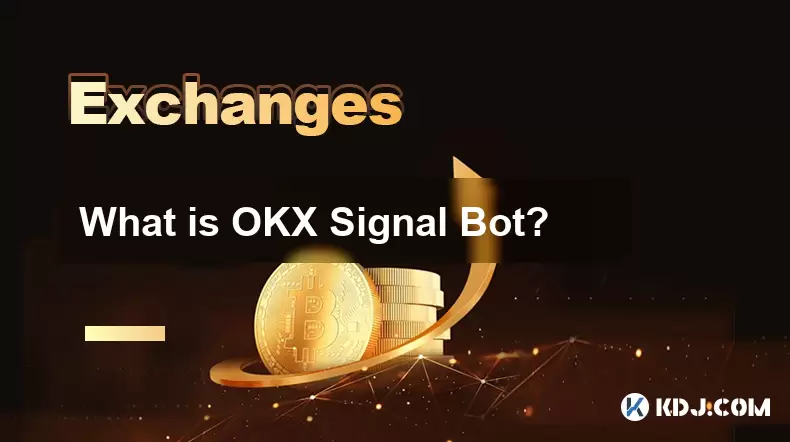
What is OKX Signal Bot?
Jul 02,2025 at 11:01pm
Understanding the Basics of OKX Signal BotThe OKX Signal Bot is a feature within the OKX ecosystem that provides users with automated trading signals and execution capabilities. Designed for both novice and experienced traders, this bot helps identify potential trading opportunities by analyzing market trends, technical indicators, and historical data. ...
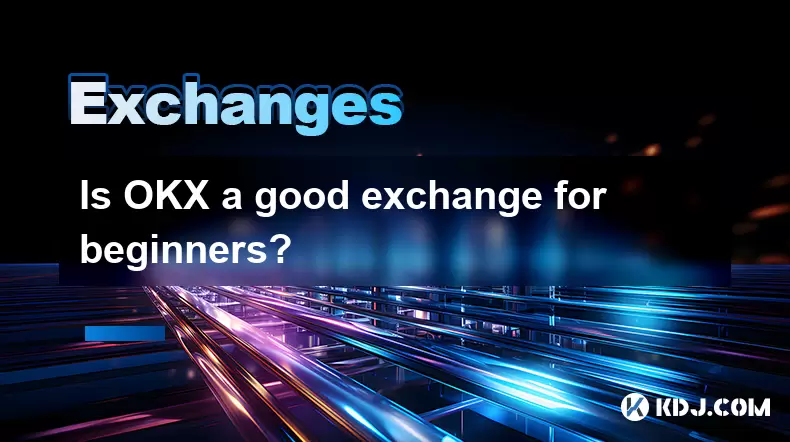
Is OKX a good exchange for beginners?
Jul 03,2025 at 05:00pm
What Is OKX and Why Is It Popular?OKX is one of the leading cryptocurrency exchanges globally, known for its robust trading infrastructure and a wide variety of digital assets available for trading. It supports over 300 cryptocurrencies, including major ones like Bitcoin (BTC), Ethereum (ETH), and Solana (SOL). The platform has gained popularity not onl...
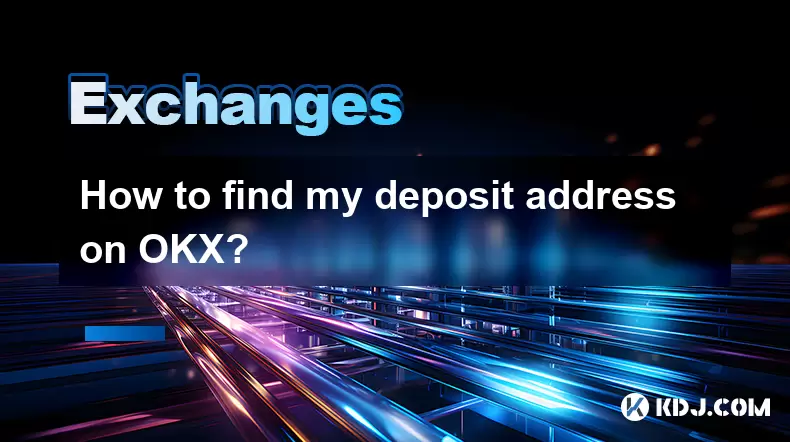
How to find my deposit address on OKX?
Jul 06,2025 at 02:28am
What is a Deposit Address on OKX?A deposit address on OKX is a unique alphanumeric identifier that allows users to receive cryptocurrencies into their OKX wallet. Each cryptocurrency has its own distinct deposit address, and using the correct one is crucial to ensure funds are received properly. If you're looking to transfer digital assets from another ...
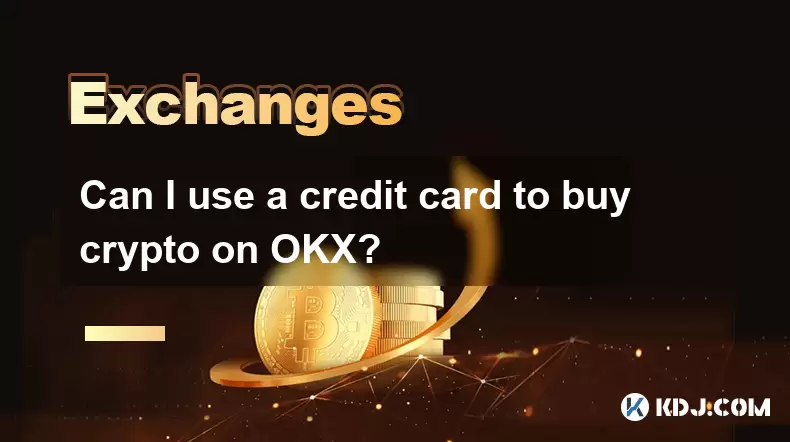
Can I use a credit card to buy crypto on OKX?
Jul 04,2025 at 04:28am
Understanding OKX and Credit Card PaymentsOKX is one of the leading cryptocurrency exchanges globally, offering a wide range of services including spot trading, derivatives, staking, and more. Users often wonder whether they can use a credit card to buy crypto on OKX, especially if they are new to the platform or looking for quick ways to enter the mark...
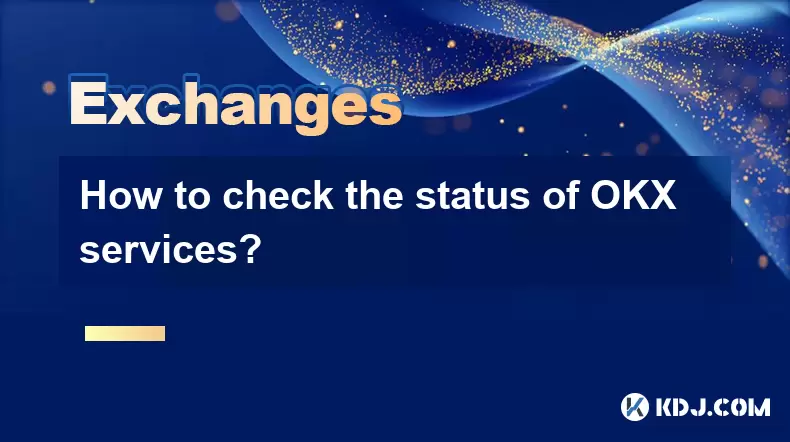
How to check the status of OKX services?
Jul 02,2025 at 11:14pm
What is OKX, and Why Checking Service Status Matters?OKX is one of the world’s leading cryptocurrency exchanges, offering services such as spot trading, futures trading, staking, and more. With millions of users relying on its platform for daily transactions, it's crucial to know how to check the status of OKX services. Downtime or maintenance can affec...

How to get API keys from OKX for trading bots?
Jul 03,2025 at 07:07am
Understanding API Keys on OKXTo interact with the OKX exchange programmatically, especially for building or running trading bots, you need to obtain an API key. An API (Application Programming Interface) key acts as a secure token that allows your bot to communicate with the exchange's servers. On OKX, these keys come with customizable permissions such ...

What is OKX Signal Bot?
Jul 02,2025 at 11:01pm
Understanding the Basics of OKX Signal BotThe OKX Signal Bot is a feature within the OKX ecosystem that provides users with automated trading signals and execution capabilities. Designed for both novice and experienced traders, this bot helps identify potential trading opportunities by analyzing market trends, technical indicators, and historical data. ...

Is OKX a good exchange for beginners?
Jul 03,2025 at 05:00pm
What Is OKX and Why Is It Popular?OKX is one of the leading cryptocurrency exchanges globally, known for its robust trading infrastructure and a wide variety of digital assets available for trading. It supports over 300 cryptocurrencies, including major ones like Bitcoin (BTC), Ethereum (ETH), and Solana (SOL). The platform has gained popularity not onl...

How to find my deposit address on OKX?
Jul 06,2025 at 02:28am
What is a Deposit Address on OKX?A deposit address on OKX is a unique alphanumeric identifier that allows users to receive cryptocurrencies into their OKX wallet. Each cryptocurrency has its own distinct deposit address, and using the correct one is crucial to ensure funds are received properly. If you're looking to transfer digital assets from another ...

Can I use a credit card to buy crypto on OKX?
Jul 04,2025 at 04:28am
Understanding OKX and Credit Card PaymentsOKX is one of the leading cryptocurrency exchanges globally, offering a wide range of services including spot trading, derivatives, staking, and more. Users often wonder whether they can use a credit card to buy crypto on OKX, especially if they are new to the platform or looking for quick ways to enter the mark...

How to check the status of OKX services?
Jul 02,2025 at 11:14pm
What is OKX, and Why Checking Service Status Matters?OKX is one of the world’s leading cryptocurrency exchanges, offering services such as spot trading, futures trading, staking, and more. With millions of users relying on its platform for daily transactions, it's crucial to know how to check the status of OKX services. Downtime or maintenance can affec...
See all articles





















